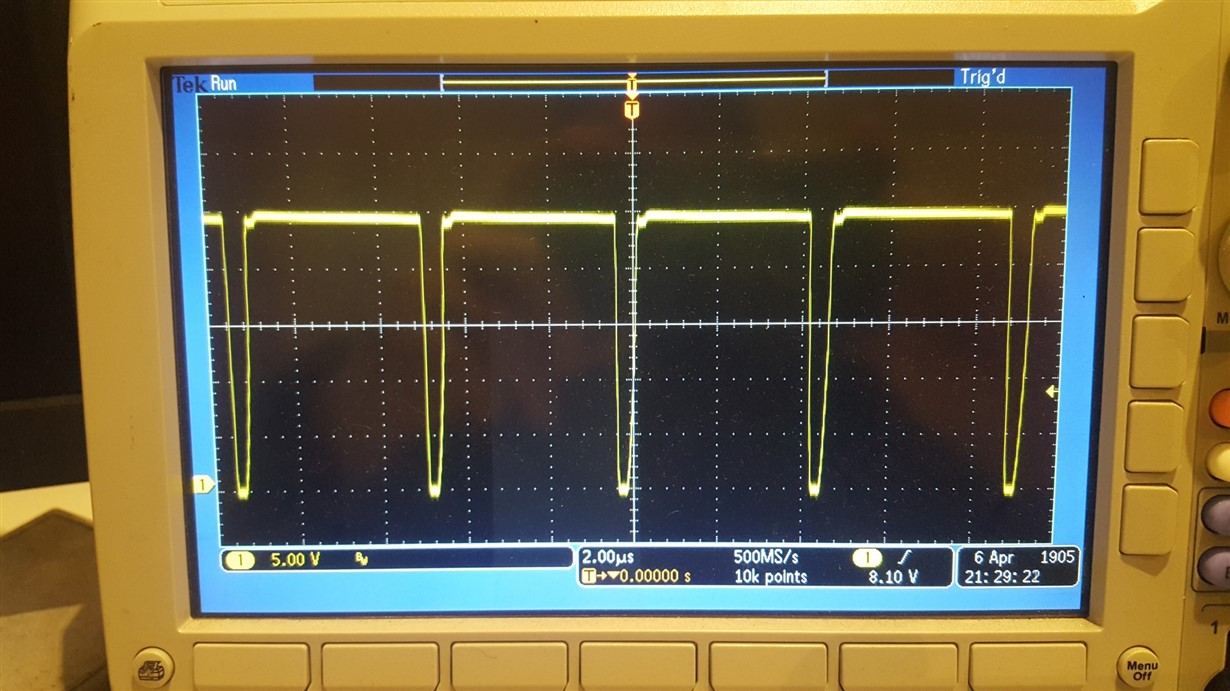Other Parts Discussed in Thread: TPA3255,
Dear TI team
Unrelated but possibly of interest to those who have assisted me with my TPA3255 PROJECT.. I managed to get it going! Very happy now. (Decoupling + a correct Reset chip, and using a PCB which did not have some obscure issue with it, did the job)
DC-DC converter. TPS43060 is where my current challenge resides.
I've put together a circuit pretty much the same as in the 'Applications' recommendation for the 10-38v in/ 40v/3a output in the Data Sheet.
When I turned it on, I find what seems like a 'minimum' pulse width/duty cycle, and I cannot adjust it with my feedback trimpot.
I'm trying to produce 50v (even @ 1 amp) but as the image shows (of my drain waveform) the drain voltage pulses, but does not, or only barely exceeds the DC supply voltage.
So, I cannot reach the 1.22v for the feedback voltage, rather, it's about .3v to .4. When this is the case, I would normally expect the Duty cycle to crank out to whatever level will produce
sufficient output voltage to achieve the right feedback. But... *nothing*... it' just sits as you see it. (22v Vin)
Are there any internal workings which might impact this?
Pay no attention to the specific mosfets shown here, I know the issues and I'm simply seeking to get the CCT working, then I'll optimize with low Cgs FETS.
Any perspective would be welcome.
Regards
Julian de Ross



